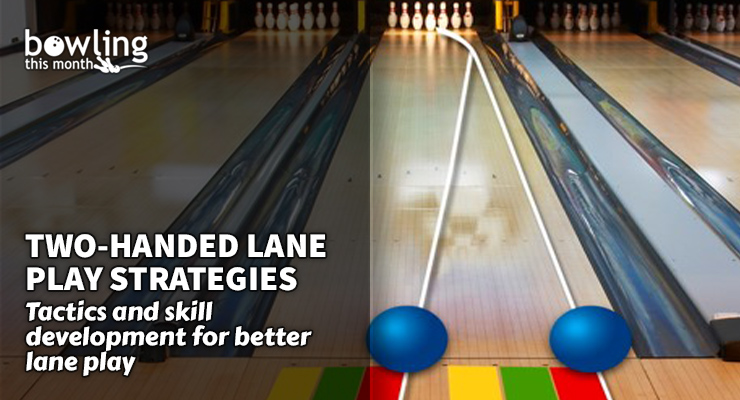Article Contents
- 1. The two-handed evolution
- 1.1. Two-handed generations
- 1.2. Lane play evolution
- 1.3. The urethane evolution
- 2. Urethane transition
- 2.1. Carrydown versus breakdown
- 3. Two-handed strategy
- 3.1. Chasing oil left
- 3.2. Getting into reactive balls
- 4. Improving the needed skills
- 4.1. Axis control
- 4.2. Speed control
- 4.3. Launch angles
- 4.4. Reactive options
- 5. Competition strategy
- 6. Conclusion
Note: This article is only available to Bowling This Month subscribers.
Since concluding my recent series on lane play, I felt it was important to address lane play and the two-handed game. While the principles remain the same as far as how lane oil moves, there are distinct differences for bowlers using this technique.
In some areas of the world, two-handed bowling is the dominant style, while in other areas, they are still a minority of bowlers, but with growing ranks at the youth level.
There are a few key areas to discuss about the current state of the two-handed game, including how it has evolved and, crucially for lane play, the use of urethane.
The two-handed evolution
Since Oksu Palermaa and Jason Belmonte first burst onto the scene about 20 years ago, we’ve already seen that the two-handed style has changed quite a bit. Very few of the modern two-handers look much like Belmo or Osku.
We’ve also seen that two-handers are adapting faster to changes in equipment and environment. Two-handers have developed three generations in 20 years, while one-handers have essentially had three generations in 150 years.
Two-handed generations
Let’s compare the bowling game to car engines. While one-handers are generally V4 to V6 engines, Osku and Jason would be V8 engines with their ability to create speed and revs. The next generation looked more like Jesper Svensson, with even higher speeds and rev rates—basically a supercharged V12.
What’s interesting is what’s going on with this newer generation. The third generation is getting closer to one-handed in terms of speed, so they’re back to being more like a V6. This is a good thing because, even two-handed, the body isn’t really designed to generate 20 mph of ball speed. Two-handers can create speed and revs with less torque and damage than one-handers, but we still don’t want to push the body to the limit. This is a precision sport, ...
Already a premium member? Click here to log in.


